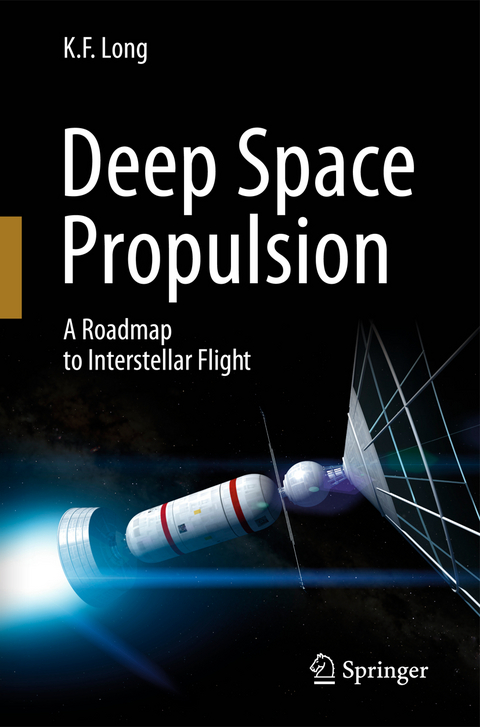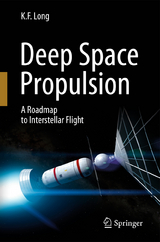Deep Space Propulsion
Springer-Verlag New York Inc.
978-1-4614-0606-8 (ISBN)
The technology of the next few decades could possibly allow us to explore with robotic probes the closest stars outside our Solar System, and maybe even observe some of the recently discovered planets circling these stars. This book looks at the reasons for exploring our stellar neighbors and at the technologies we are developing to build space probes that can traverse the enormous distances between the stars.
In order to reach the nearest stars, we must first develop a propulsion technology that would take our robotic probes there in a reasonable time. Such propulsion technology has radically different requirements from conventional chemical rockets, because of the enormous distances that must be crossed. Surprisingly, many propulsion schemes for interstellar travel have been suggested and await only practical engineering solutions and the political will to make them a reality. This is a result of the tremendous advances in astrophysics that have been made in recent decades and the perseverance and imagination of tenacious theoretical physicists. This book explores these different propulsion schemes – all based on current physics – and the challenges they present to physicists, engineers, and space exploration entrepreneurs.
This book will be helpful to anyone who really wants to understand the principles behind and likely future course of interstellar travel and who wants to recognizes the distinctions between pure fantasy (such as Star Trek’s ‘warp drive’) and methods that are grounded in real physics and offer practical technological solutions for exploring the stars in the decades to come.
Kelvin Long was born in Cambridge, England. He holds a Bachelors degree in Aerospace Engineering and a Masters degree in Astrophysics, both from Queen Mary College University of London. He has been a college and university teacher and served for several years in the Parachute Regiment Volunteer Reserve of the British Army. He currently works as a physicist in industry. He has published numerous papers and articles on the subject of astrophysics and space exploration and is currently the Assistant Editor of the Journal of the British Interplanetary Society. He has also contributed to many other publications on interstellar travel. He has appeared on the Austrian Broadcasting Radio Station FM4 as well as in the documentary How to Colonize the Stars produced by Christian Darkin. He is a Fellow of the Royal Astronomical Society, a chartered member of the Institute of Physics, a member of The Planetary Society, a member of the American Institute of Aeronautics & Astronautics, Fellow of the British Interplanetary Society, and an associate member of the International Association for Astronomical Artists. He is a Practitioner of the Tau Zero Foundation, which actively promotes and coordinates international research into interstellar flight and within this capacity was the co-founder of an interstellar research initiative called Project Icarus. He is happily married to Gemma and likes to spend his spare time reading and writing science fiction, spacecraft model building, and using his Schmidt-Cassegrain telescope.
Foreword.- Preface.- Chapter 1: Reaching for the Stars.- Chapter 2: The Dream of Flight and the Vision of Tomorrow.- Chapter 3: Fundamental Limitations to Achieving Interstellar Flight.- Chapter 4: Aviation - The Pursuit of Speed, Distance and Height.- Chapter 5: Astronautics - The Development and Science of Rockets.- Chapter 6: Exploring The Solar System and Beyond.- Chapter 7: Exploring Other Star Systems.- Chapter 8: Solar System Explorers - Historical Spacecraft.- Chapter 9: Electric and Nuclear-Based Propulsion.- Chapter 10: Sails and Beams.- Chapter 11: Nuclear Fusion Propulsion.- Chapter 12: External Nuclear Pulse Propulsion.- Chapter 13: Towards Relativistic Propulsion - Antimatter and the Interstellar Ramjet.- Chapter 14: Aerospace Design Principles in Interstellar Flight.- Chapter 15: The Scientific, Cultural and Economic Costs of Interstellar Flight.- Chapter 16: The Role of Speculative Fiction in Driving Technology.- Chapter 17: Realizing the Technological Future and The Roadmap To The Stars.- Chapter 18: From Imagination to Reality.- Epilogue.- Appendices.- Index.
| Reihe/Serie | Astronomers' Universe |
|---|---|
| Zusatzinfo | 22 Illustrations, color; 51 Illustrations, black and white; XXI, 367 p. 73 illus., 22 illus. in color. |
| Verlagsort | New York, NY |
| Sprache | englisch |
| Maße | 155 x 235 mm |
| Themenwelt | Sachbuch/Ratgeber ► Natur / Technik ► Weltraum / Astronomie |
| Naturwissenschaften ► Physik / Astronomie ► Astronomie / Astrophysik | |
| Technik ► Fahrzeugbau / Schiffbau | |
| Technik ► Luft- / Raumfahrttechnik | |
| ISBN-10 | 1-4614-0606-4 / 1461406064 |
| ISBN-13 | 978-1-4614-0606-8 / 9781461406068 |
| Zustand | Neuware |
| Haben Sie eine Frage zum Produkt? |
aus dem Bereich




